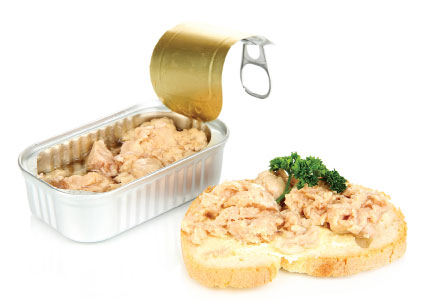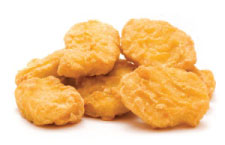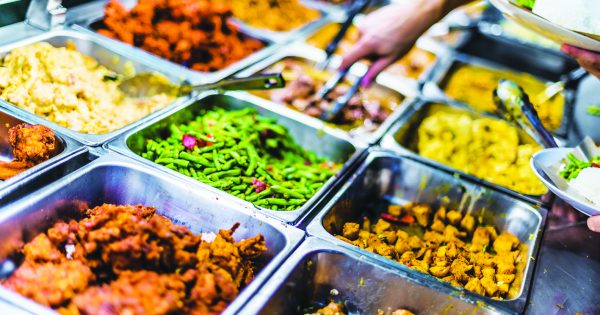Processed foods have had a bad reputation and are being perceived as being unhealthy. This is because they have undergone some form of processing and other ingredients such as additives may be added to prolong their shelflife or for other technological purposes. However, in this modern, fast-paced lifestyle, processed foods have become part of our daily life. Processed foods can indeed be part of our daily diet, provided we make appropriate use and choice of these foods.

Generally speaking, it is not the method of processing per se that determines whether any given processed food is unhealthy. Instead, it is the ingredients that are added by the manufacturer and/or the frequency of your consumption that establishes just how unhealthy the processed food is. Therefore, we have to be mindful that not all processed foods are bad. After all, many of the familiar processed foods that can be found in our kitchen would include flour, bread, breakfast cereals, pasta, biscuits, milk, canned tuna or sardines, pasta sauces, frozen peas, and frozen meats.
Read on to understand what processed foods exactly mean and how you can use them appropriately in your family’s daily diet.
What?
Processed foods are generally raw foods that have undergone a certain degree of processing. This ranges from:
- Minimally processed (e.g. bagged spinach, cut vegetables)
- Foods processed at their peak (e.g. canned beans, frozen vegetables)
- Foods with ingredients added for flavour and texture (e.g. Instant pasta sauces, flavoured yoghurt)
- Ready-to-eat foods (e.g. biscuits, ham)
- Heavily processed (e.g. flour, white bread, fish fingers sausages, nuggets)

Why?
Foods are processed for a few purposes:
- To lock in nutritional quality and freshness
- To reduce the risk of spoilage as food begins to deteriorate once they have been harvested/ butchered
- To increase their availability to consumers at all times
- To change or stabilise food texturally
- To improve taste and convenience

How?
Various methods are being used today, for example:
- Freezing (e.g. frozen peas, carrots, corn)
- Drying (e.g. raisins, dried dates)
- Fermenting (e.g. cheese, shrimp paste)
- Smoking (e.g. smoked fish, sausages)
- Pickling or salting (e.g. Chinese pickles, kimchi)
- Canning (e.g. canned beans, canned sardines)
- Preserving with sugar or honey (e.g. canned fruits)
- Refining away parts of the food that spoil easily (e.g. white rice, white flour)
- Adding chemical preservatives (e.g. some processed meat and fish products)
- Heat treatment (pasteurising, ultra-heat treatment, UHT) (e.g. milk, fruit juices)
Understanding food additives
Food additives may be used in the processing of foods. They are chemical substances added to food to produce specific desirable technological effects. These effects include to 1) maintain nutritive quality 2) enhance the shelf life 3) make it attractive and 4) help in the foods’ processing, packaging or storage. These substances have been tested for safety and are controlled by food laws. Common food additives include preservatives, antioxidants, colouring and flavouring agents.
Consumers have been particularly concerned with the use of preservatives in processed foods. Food preservatives are added to food to inhibit or slow down food spoilage. The Ministry of Health publishes a list of preservatives (and other food additives) that may be used. The amount and the types of foods that may contain added preservatives are also controlled.
Role of Processed Foods in Daily Diet
It is not necessary to strike all processed foods from your grocery list. It does not mean that processed foods must be totally avoided because they have undergone some form of processing or added with food preservatives or other additives. It is the ingredients used and the nutrient content of the food that will determine if a processed food can be included in the daily diet. Use more of foods that are high in protein, vitamins and minerals and dietary fibre. Reduce intake of processed foods that are high in sugar, salt and fat. While you can include processed foods in the daily diet, it is important to regulate the frequency and amount of these foods consumed.
Make Wise Choices!
It is quite impossible to prepare a meal without any form of processed foods in this age unless you own a farm, a vegetable garden, an orchard, a paddy field or the sea in your backyard. You can’t run away from processed foods but you have the power to make wiser choices when purchasing them.
Use the nutrition information (nutrition information panel and nutrition claims) and the ingredients list on the food packaging to guide you in making choices of processed foods.

- Be sure to check out the Nutrition Information Panel (NIP) for the energy and nutrient (carbohydrate, protein and fat) content of the food. Sugar content is also declared for ready-to-drink beverages. Some manufacturers also state the amount of vitamins and minerals in the food. Use such information on the NIP to guide you in choosing the various brands of a particular processed food you are contemplating to purchase.
- Manufacturers are permitted to make specific nutrient content claims on the label. You can opt for labels that declare “lower sodium/salt”, “low sugar”; or products with “source of calcium” or “rich in vitamin A”.
- Another type of nutrition information permitted is nutrient function claims. For example if a product meets the required criteria stipulated by the law, it may claim: Calcium is important for strong bones and teeth. It is important however not to purchase a product merely based on the nutrition claims, but to also consider the nutrient content declared on the NIP.
- Go through the ingredients’ list as the law requires that ingredients in a food product to be listed on the label. And they must be listed according to the amount used from the highest to the lowest. You can use this list to know the main ingredients of that particular product. If sugar is listed as the first few items, it indicates that the food product is high in sugar. Be wise and look out for sugars listed as different names such as sucrose, maltose, corn syrup, high-fructose corn syrup and fruit juice concentrate.
While it is not necessary to totally remove all forms of processed foods, it is important to choose wisely. Be extra vigilant when you are out grocery shopping! We have to be careful with the ingredients used, how the foods are being processed and most importantly the nutrient content of the foods. Nevertheless, it is better to have more fresh food in your meals such as fresh vegetables, fruits, fresh meat and seafood and limit the frequency of consuming processed foods. Remember the basic principle of “Balance – Moderation – Variety” in your daily dietary practices. Overconsumption of any type of food will bring dire consequences to you and your family’s health.
An educational collaboration with Nutrition Society of Malaysia.





Comments